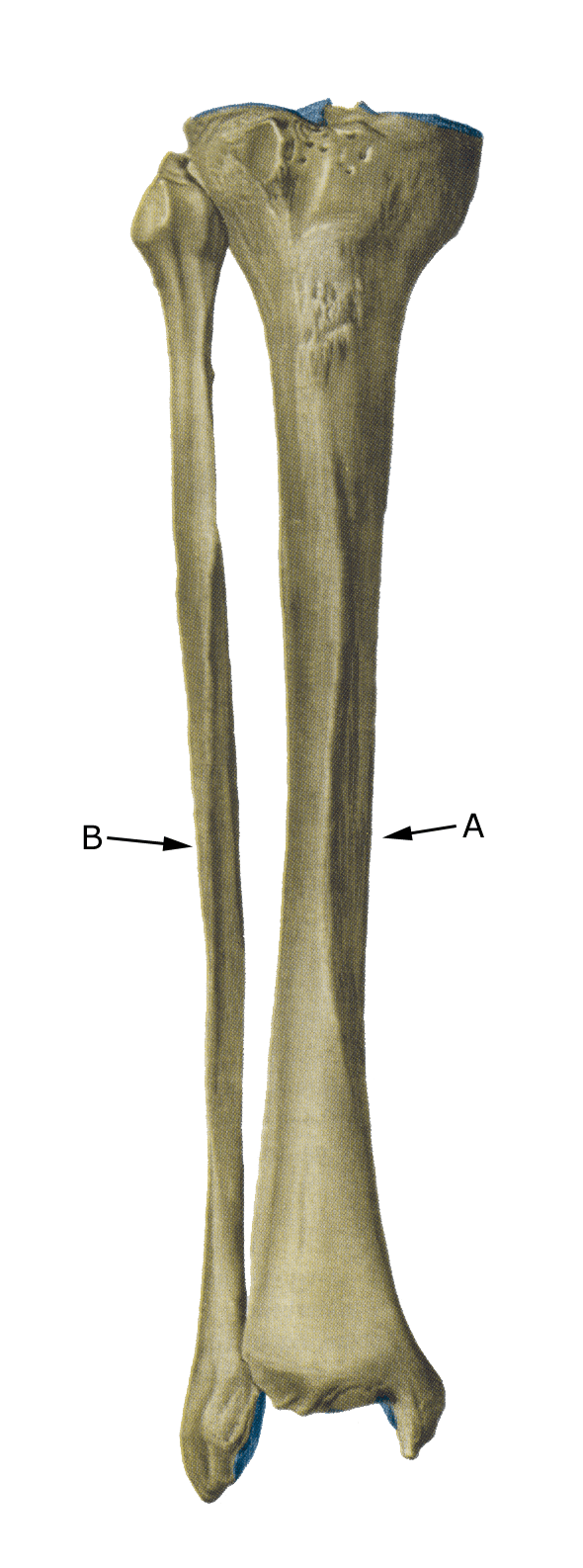Anatomy

The bones of the lower leg include the tibia and fibula.
Shinbone from the front.
A. Tibia
B. Fibula
Cause
A severe trauma can cause fractures to both the tibia and fibula.Fractures of the fibula are often caused by kicks to the outside of the tibia or twisting of the ankle.
Repetitive repetitive stress (e.g. running, basketball, athletics and football) can cause so much bone stress that cracks (fractures) appear in the lower leg bones (fatigue fracture, stress fracture).Fatigue fractures are particularly common in women with eating disorders and in people with vitamin D and calcium deficiencies (Nose-Ogura S, et al 2019).
Symptoms
Pain on pressure (direct and indirect tenderness) and strain (walking, running, twisting).
Examination
The diagnosis is usually made by a clinical examination by a relevant professional and can usually be confirmed by X-ray. Ultrasound scans can often detect fatigue fractures much earlier
See an example of a fatigue ultrasound scan
MRI scans may be indicated in some cases, especially for fatigue fractures in the front of the tibia, which often cause healing problems. Fatigue fractures of the tibia can sometimes be difficult to distinguish from tibial osteomyelitis, which extends over a longer area of the tibia.
Eating disorders and lack of menstruation (amenorrhoea) increase the risk of fatigue fractures up to 13 times in teenagers. Low bone mineral density (BMD) increases the risk of fatigue fractures 4.5 times (Nose-Ogura S, et al 2019).
Treatment
Treatment includes relief from pain-inducing activity.Tibial fractures require immobilisation in a brace and possibly surgery. Fractures of the fibula, if no twisting injuries to the ankle are involved, can often be treated with weight bearing (and possibly painkillers) alone.
Fatigue fractures are usually treated with offloading for a few months, but can take significantly longer (Encinas R, et al. 2023). Fatigue fractures at the front of the tibia often require immobilisation (plaster cast) and surgery may be necessary.In fatigue fractures, any eating disorders should of course be treated.
Rehabilitation
It is important to maintain fitness and muscle strength of all other muscles while offloading the lower leg. All loading should be within the pain threshold so that there is no pain in the lower leg during or after loading. If surgery has been performed, there will be specific rehabilitation limitations that the operator will inform you about.
Complications
If the progression is not smooth, you should be re-examined by a doctor to ensure that the diagnosis is correct and that the fracture is healing as planned. In some cases, a false joint may form (pseudoarthrosis), which will require surgical treatment.
